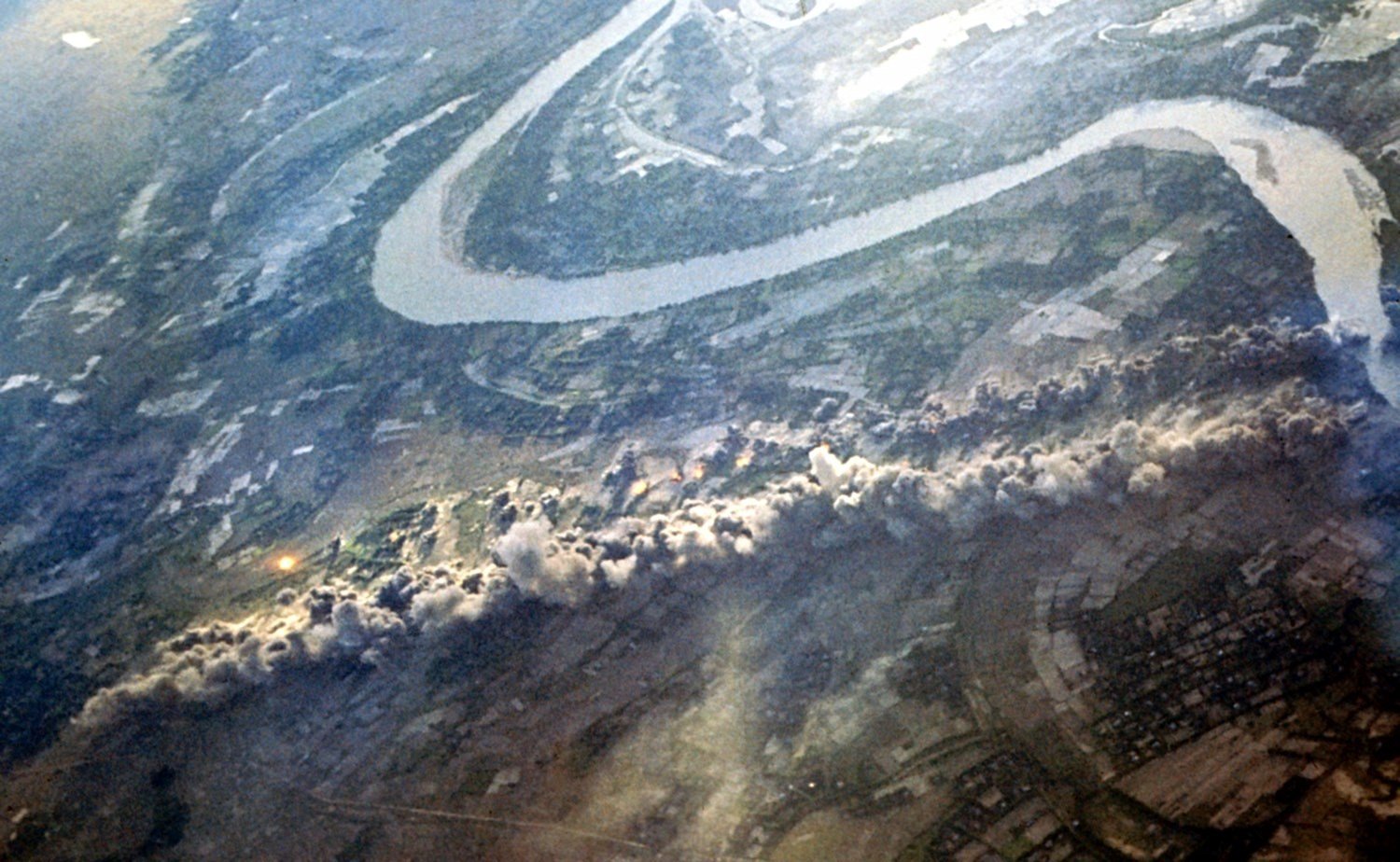RARE! Vietnam War 5th Bombardment Wing 23d Bombardment Squadron B-52 Crew Theater Flag





























RARE! Vietnam War 5th Bombardment Wing 23d Bombardment Squadron B-52 Crew Theater Flag
Comes with C.O.A.
This extremely rare and museum-grade Vietnam War theater-made flag is from the 5th Bombardment Wing, 23d Bombardment Squadron. Thes 5th Bombardment Wing 23d Bombardment Squadron and its crew saw combat over Southeast Asia during the Vietnam War. This theater-made and hand-painted 5th Bomb Wing unit crest flag was hand-painted by the men of the 5th Bombardment Wing. Like many other theater flag these unit flags were hung in the barracks and hangers while the crews of the 5th Bomb Wing attacked targets in the region while supporting American and allied ground forces during Operation Arc Light between 1965 and 1968. During Operation Arc Light (sometimes Arclight) from 1965 to 1973, the United States Air Force deployed B-52 Stratofortresses from bases in the U.S. Territory of Guam to provide battlefield air interdiction during the Vietnam War. This included strikes at enemy bases, supply routes, and behind the lines troop concentrations, as well as occasionally providing close air support directly to ground combat operations in Vietnam. The conventional bombing campaign was supported by ground-control-radar detachments of the 1st Combat Evaluation Group (1CEVG) in Operation Combat Skyspot. Arc Light operations usually targeted enemy base camps, troops concentrations, and supply lines. The bombers were first used in Southeast Asia on June 18, 1965. Flying from Andersen AFB, Guam, 27 aircraft dropped 750-pound (340 kg) and 1,000-pound (455 kg) bombs on a Viet Cong stronghold. During this mission two B-52Fs were lost in a mid-air collision on June 19, 1965, while circling over the South Pacific Ocean, approximately 250 miles (400 km) offshore at the point of the Demilitarized Zone (DMZ), unable to conduct mid-air refueling in awaiting arrival of KC-135A tankers for pre-strike air refueling. Missions were commonly flown in three-plane formations known as "cells". Releasing their bombs from the stratosphere, the B-52s could neither be seen or heard from the ground. B-52s were instrumental in destroying enemy concentrations besieging Khe Sanh in 1968, and in 1972 at An Loc and Kontum. Arc Light was re-activated at Andersen on February 8, 1972, when President Richard Nixon resumed bombing of North Vietnam in an effort to move peace talks along. Over 15,000 men were sent to Andersen on temporary duty over the next 90 days. With limited barracks and other facilities, tents were set up for use by men working 80-hour weeks. Arc Light missions continued until the cessation of hostilities by U.S. forces on August 15, 1973. Between June 1965 and August 1973, 126,615 sorties (B-52D/F/G) were flown over Southeast Asia. During those operations, the U.S. Air Force lost 31 B-52s; 18 were lost from hostile fire over North Vietnam and 13 from operational causes.
The typical full bomb loads were:
B-52F: 36 500-pound (225 kg) and 750-pound (340 kg) bombs in a mixed load, or 51 500-lb. bombs, 27 in the bomb bay and 24 on underwing pylons.
B-52D: 108 500-lb. bombs, or a mixed load of 64 500-lb. bombs in the bomb bay and 24 750-lb. bombs on underwing pylons.
B-52G: 27 bombs, all in the bomb bay, no external bombs were carried.